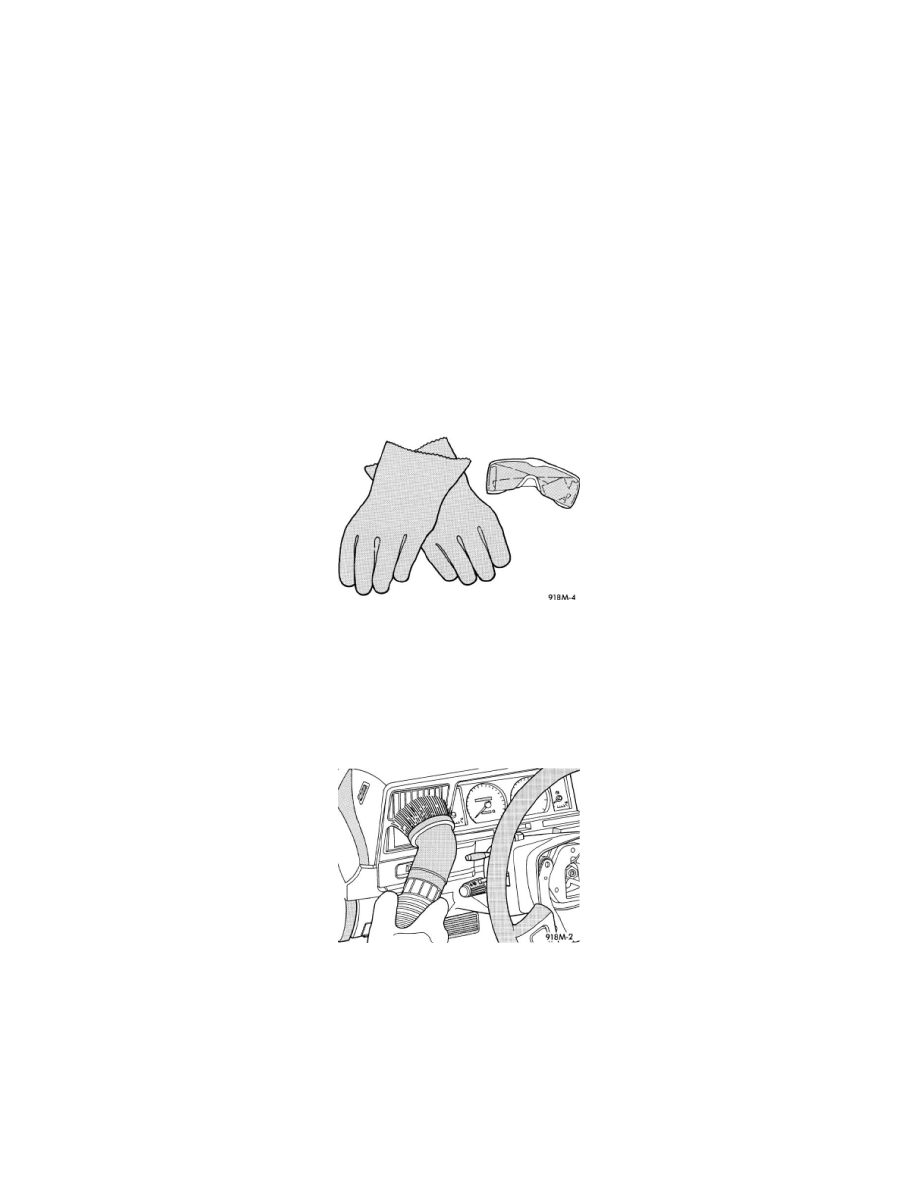Sprinter 3500 V6-3.0L DSL Turbo (2008)

Repairs and Inspections Required After a Collision: Service and Repair
SERVICE AFTER A SUPPLEMENTAL RESTRAINT DEPLOYMENT
Any vehicle which is to be returned to use following a supplemental restraint deployment, must have the deployed restraints replaced. In addition, if the
driver airbag has been deployed, the Steering Control Module (SCM)/clockspring (also known as the steering column module/MRM) and the steering
wheel must be replaced. If the passenger airbag is deployed, the instrument panel must be replaced. The seat belt tensioners can be deployed independent
of an airbag deployment and must also be replaced if it has been deployed or damaged. If a side curtain or seat airbag has been deployed, their respective
trim covers must also be replaced. These components are not intended for reuse and will be damaged or weakened as a result of a supplemental restraint
deployment, which may or may not be obvious during a visual inspection.
It is also critical that the mounting surfaces and mounting brackets for the Occupant Restraint Controller (ORC) (also known as the lowline or highline
airbag control unit/ARCADE) and the side acceleration impact sensors be closely inspected and restored to their original conditions following any
vehicle impact damage. Because the ORC and each side acceleration impact sensor are used by the supplemental restraint system to monitor or confirm
the direction and severity of a vehicle impact, improper orientation or insecure fastening of these components may cause airbags not to deploy when
required, or to deploy when not required. The ORC must be replaced if it or the structure of the instrument panel center console immediately surrounding
it is visually damaged in any way, or after three airbag deployments regardless of visual damage to the unit.
All other vehicle components should be closely inspected following any supplemental restraint deployment, but are to be replaced only as required by the
extent of the visible damage incurred.
CLEANUP PROCEDURE
Following a supplemental restraint deployment, the vehicle interior will contain a powdery residue. This residue consists primarily of harmless
particulate by-products of the small pyrotechnic charge that initiates the propellant used to deploy a supplemental restraint. However, this residue may
also contain traces of sodium hydroxide powder, a chemical by-product of the propellant material that is used to generate the inert gas that inflates the
airbag. Since sodium hydroxide powder can irritate the skin, eyes, nose, or throat, be certain to wear safety glasses, rubber gloves, and a long-sleeved
shirt during cleanup.
WARNING: To avoid serious or fatal injury, if you experience skin irritation during cleanup, run cool water over the affected area. Also, if you
experience irritation of the nose or throat, exit the vehicle for fresh air until the irritation ceases. If irritation continues, see a physician.
1. Begin the cleanup by using a vacuum cleaner to remove any residual powder from the vehicle interior. Clean from outside the vehicle and work
your way inside, so that you avoid kneeling or sitting on a non-cleaned area.
2. Be certain to vacuum the heater and air conditioning outlets as well. Run the heater and air conditioner blower on the lowest speed setting and
vacuum any powder expelled from the outlets.
CAUTION: All damaged, ineffective, or non-deployed supplemental restraints which are replaced on vehicles are to be handled and
disposed of properly. If an airbag unit or seat belt tensioner unit is ineffective or damaged and non-deployed, refer to the Hazardous
Substance Control System for proper disposal. Be certain to dispose of all non-deployed and deployed supplemental restraints in a
manner consistent with state, provincial, local and federal regulations.
3. Next, remove the deployed supplemental restraints from the vehicle. Refer to the appropriate service removal procedures.
